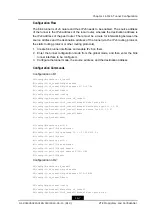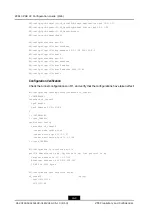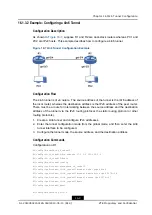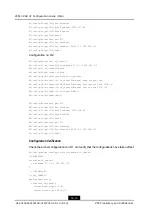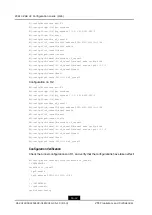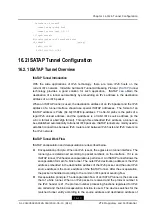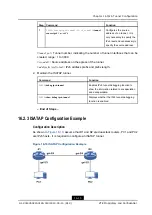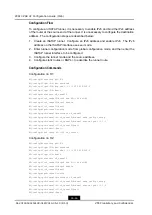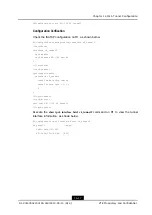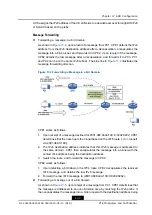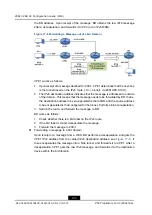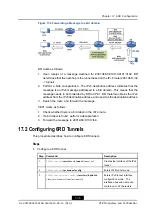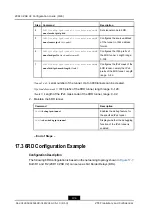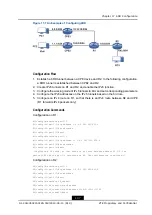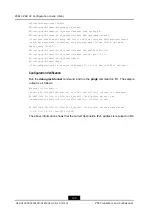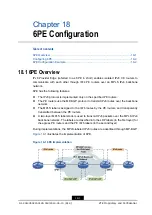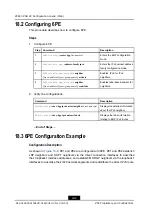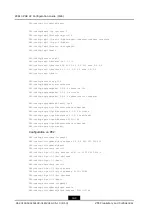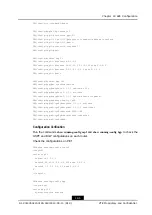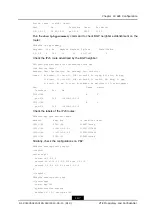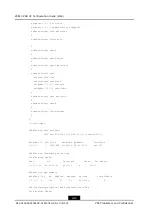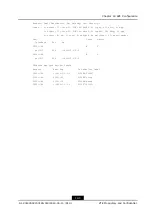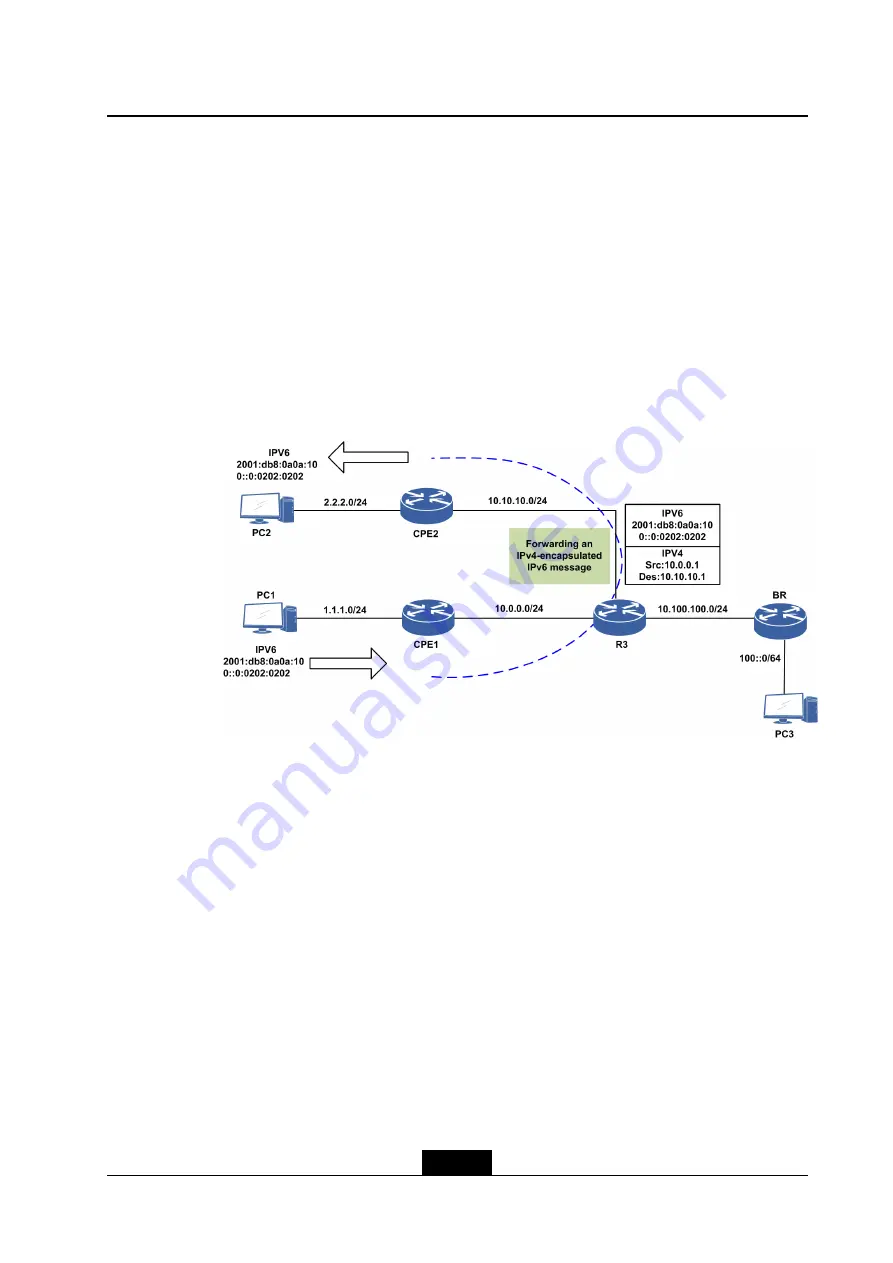
Chapter 17 6RD Configuration
A CE assigns the IPv6 address of the CE LAN side to a downstream user through DHCPv6
or SLAAC based on the prefix.
Message Forwarding
l
Forwarding a message in a 6rd domain
As shown in
, upon arrival of a message from PC1, CPE1 obtains the IPv4
address from the IPv6 destination address after a decapsulation, encapsulates the
message into a 6in4 tunnel, and forwards it to CPE2. Upon receipt of the message,
CPE2 obtains the raw message after a decapsulation, and forwards it to PC3. PC1
and PC2 can be on the same IPv6 subnet. The blue line in
illustrates the
message forwarding direction.
Figure 17-4 Forwarding a Message in a 6rd Domain
CPE1 works as follows.
1.
Upon receipt of a message destined for 2001:db8:0a0a:100::0:0202:0202, CPE1
determines that the next-hop is the tunnel based on the IPv6 route (::/0 -> tunnel1
via 2001:db8:0:100:).
2.
The IPv6 destination address indicates that this IPv6 message is addressed to
the same domain. CPE1 then encapsulates the message into a tunnel with the
carried IPv4 address being the destination address.
3.
Search the route, and forward the message to CPE2.
CPE2 works as follows.
1.
Upon detecting a 6rd label on the IPV4 route, CPE2 decapsulates the received
IPv4 message, and obtains the raw IPv6 message.
2.
Forward the raw IPv6 message to (2001:db8:0a0a:100::0:0202:0202).
l
Forwarding a message out of a 6rd domain
As shown in
, upon receipt of a message from PC1, CPE1 determines that
the message is addressed to an out-of-domain area by matching the IPv6 prefix. It
then encapsulates the message into a 6in4 tunnel with the destination address being
17-3
SJ-20140504150128-018|2014-05-10 (R1.0)
ZTE Proprietary and Confidential

